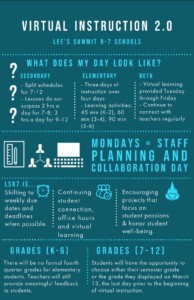How Frames, Plans, Platforms & PD Support Great Teaching

Stories of innovative classrooms and schools may be dismissed as irrelevant or unscalable because they are powered by superstar teachers. But districts and networks are making it increasingly possible for all of their teachers to achieve great results with common frameworks, big goals and good plans, strong development systems for adult learners, and learning platforms.
Common frame. Expeditionary Learning is a national network of more than 150 schools that share powerful design principles including ” The having of wonderful ideas.” EL schools feature “dynamic leadership, compelling curriculum, engaging instruction, continuous assessment, and a positive school culture.”
Teachers learn to use open-ended guiding questions to push students to search for evidence, form and articulate opinions and positions, and put together recommendations or conclusions that are then presented in a public setting.
The EL frame isn’t scripted and the network lacks a common platform, but the guiding principles and assessment strategies are powerful. According to Mahoney, “while we do do tests, because our kids are going to see tests when they get out into the word, we very much prefer analysis of learning as assessment.”
Build a plan. When Dr. Amy Galloway, principal of Bate Middle School in Danville, Kentucky, asked her staff “Who went into teaching to teach kids how to take a test?” Not a single person raised their hand. When they started talking about why they became educators and what skills and knowledge they wanted to emphasize and focus on at Bate, she started a lively and ultimately formative discussion.
Her teachers are not all “superstars,” except in the sense that they are teachers. Together they developed the Bate innovation plan, which focuses on the district diploma, the book Habits of Mind, lots of project- and challenge-based learning, and a balanced assessment system combining their experiential focus and performance-based assessments. She said she and her staff “want kids to learn to ask the question, to have the ability to find the answers to questions that they have not previously been given, and for 100% of our kids to be problem solvers.”
The Bate teacher conversation took place within a district with well stated goals focused on powerful learning experiences, growth for all, global preparedness, effective communication, and involved community. Good goals, a solid plan, shared protocols, and strong academic systems help every teacher promote deeper learning every day.
Development system. Hiring and developing teachers is a Summit Public Schools priority. Demonstrated expertise across seven dimensions of the Summit continuum places teachers on one of four levels: basic, proficient, highly proficient, and expert. The measured dimensions of teaching include Assessment, Content, Curriculum, Instruction, Knowing Learners and Learning (special ed, ELL, etc), Leadership, and Mentoring.
Placement and movement on the continuum are based on a combination of principal evaluation, peer evaluation and self evaluation is considered. The system empowers teachers to present evidence of their performance and growth. Each of the four steps typically takes two years to master. The competency-based system helps good teachers become great teachers.
BloomBoard is another example of a teacher development system. BloomBoard is the observation and professional development marketplace of choice in Colorado and Indiana. Bloomboard makes it easy for every teacher to have a individual development plan linked to great learning resources. It is also used by large school districts including Oakland Unified and high performing school networks including Aspire and Green Dot.
Adult learners. According to Odyssey executive director Marcia Fulton, a Denver K-8 school, “leaders, teachers, and students embrace the power of student-engaged assessment practices to build student-ownership of learning, focus students on reaching standards-based learning targets, and drive achievement.” This requires that everyone involved in the education process understand that the best way for students to learn is to continually assess their work through the use of models, reflection, critique, rubrics, and working with experts.
It does not require that teachers be experts in all things. Fulton says it does require staff members “to engage in ongoing data inquiry and analysis, examining everything from patterns in student work to results from formal assessments, disaggregating data by groups of students to recognize and address gaps in achievement.” All of which can be taught if they are not part of a teacher’s skill set upon arrival.
Springfield Renaissance Principal Stephen Mahoney takes “regular” teachers and helps them unleash their inner super-teacher. By using common learning targets throughout the school, “teachers gear their teaching to getting kids to demonstrate multiple ways of showing they have mastered their learning targets.” He said that typically a student receives a grade but they really have no idea what it means. With learning targets that same student knows exactly what knowledge and skill they need to demonstrate.
Platform play. The 130 high schools in the New Tech Network share a technology enabled project-based learning approach and Echo, common learning management system. Each course at New Tech is made up of a series of projects (similar in size to units at other schools). Now scaling within Network schools are College Ready Assessments embedded within projects which enable teachers to score individual student work.
Echo helps to ensure that each project is standards-based and aligned to Learning Outcomes. It also includes a big curated library of projects that teachers can use or adapt. Echo has some social learning features and supports online professional development. CEO Lydia Dobyns said, “Echo continues to play significant role–new reporting tools are helping teachers and administrators use student data more effectively.
Dobyns said New Tech is shifting from “fidelity to the model” to “student outcomes” as measure of success. The goal of 100% college and career ready graduates and two years of development to support Common Core have culminated in a completely redesigned School Success Rubric–rubrics aligned with learning outcome for 5th, 8th and 9-12th grades.
For teachers that become superstars, Echo powers upper level STEM courses online across the network and to host districts (about 90% of NTN sites are district schools, about 10% are charter schools).
Bloomboard is a portfolio company of Learn Capital where Tom is a partner







0 Comments
Leave a Comment
Your email address will not be published. All fields are required.